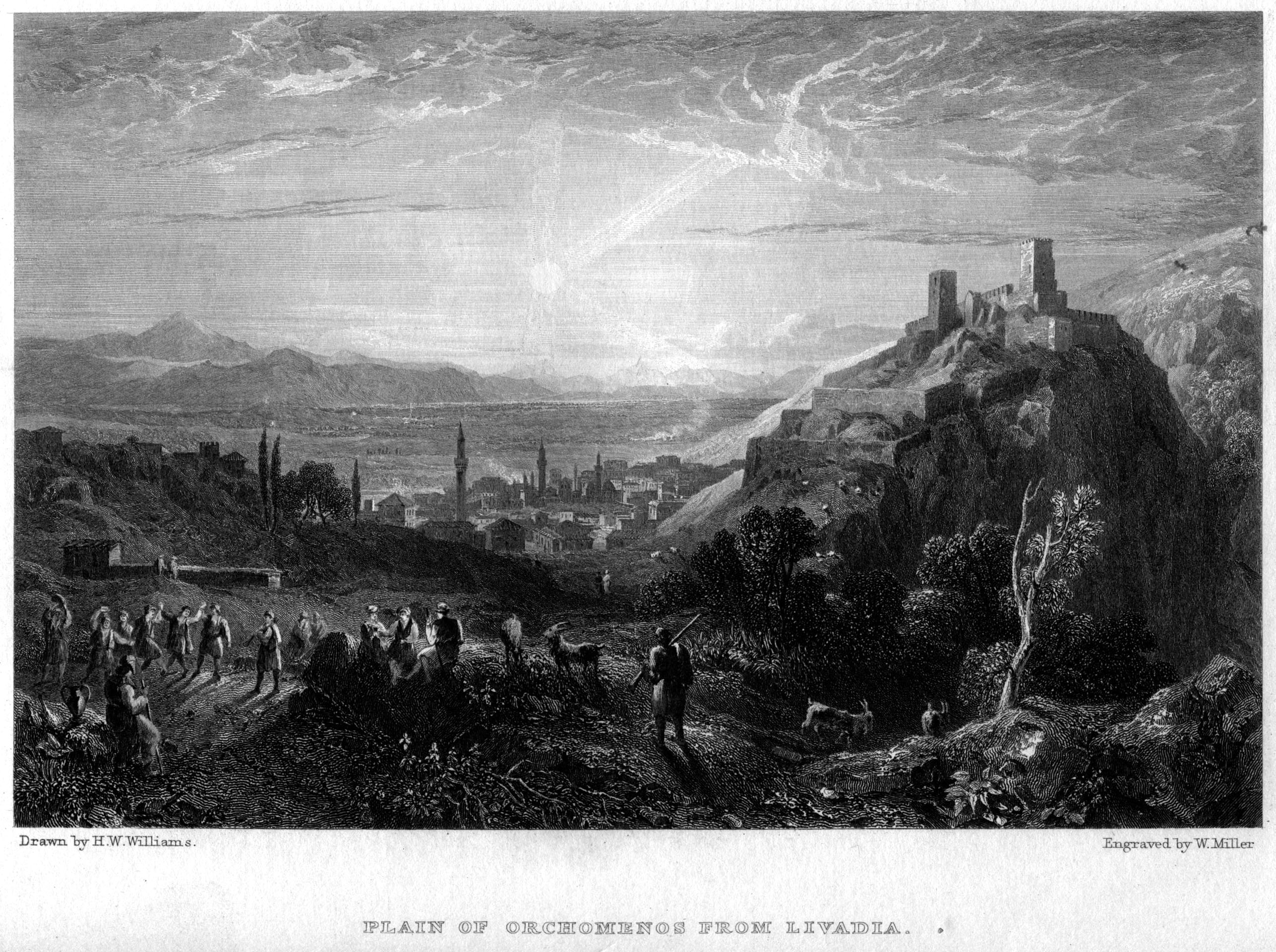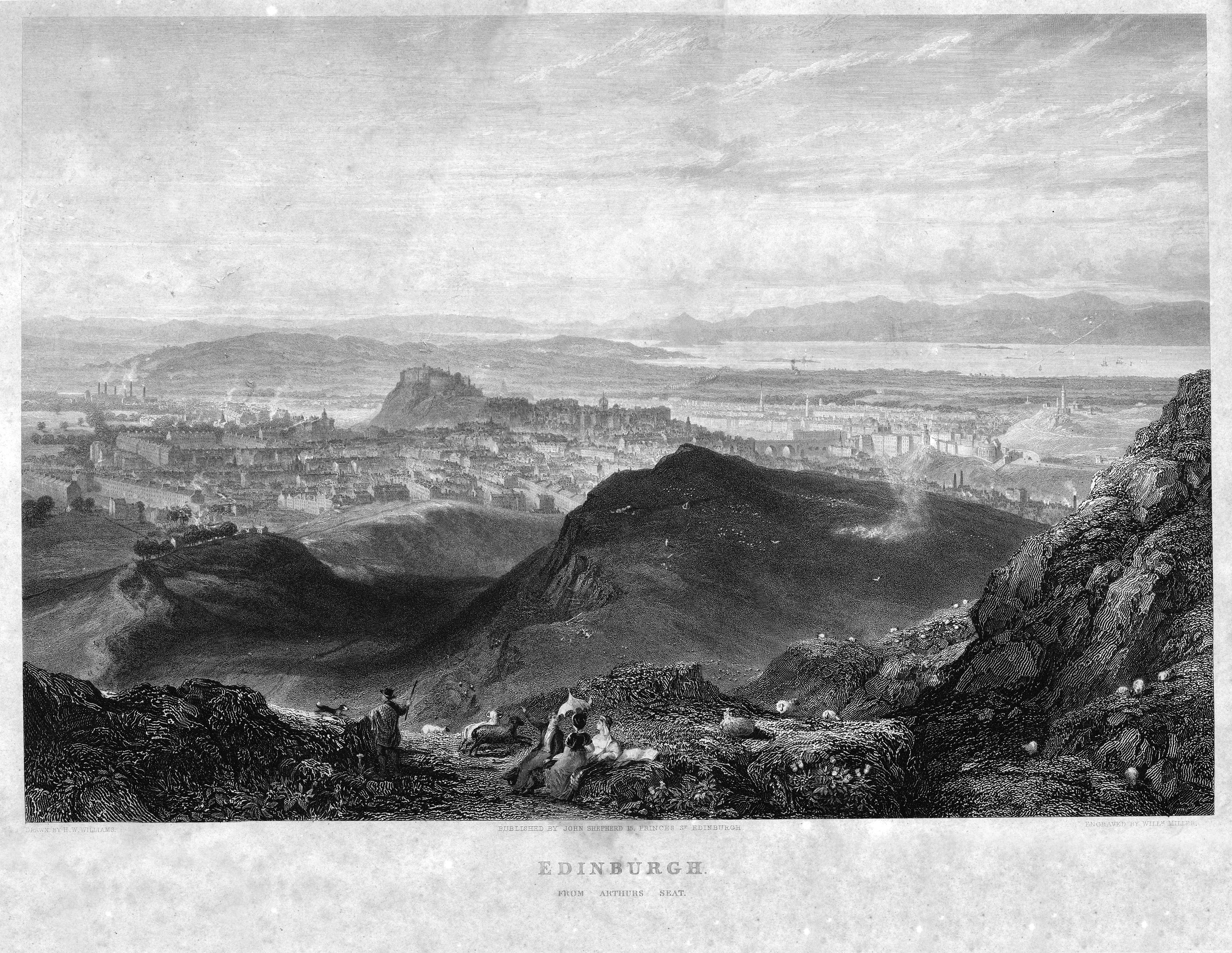Not as unconnected as you might think: Jason traces some initial connections between classical literature and imagery and the mountains of Scotland.
I have been trying to work out recently in some spare moments how far travellers’ accounts from Scotland from the eighteenth and nineteenth centuries are influenced by the classical tradition in their portrayal of mountains (and in that sense this post follows on from my previous one on Edward Dodwell and travel writing in Greece).
JOHNSON AND BOSWELL IN THE HIGHLANDS
On the face of it the answer is ‘not very’. Samuel Johnson was famously unimpressed by the mountainous terrain of the Highlands during his visit in 1773. There are very few classical resonances in his descriptions of the landscape he travels through.
One rare exception is the following, from fairly early on in the work:
Of the hills many may be called with Homer’s Ida abundant in springs, but few can deserve the epithet which he bestows on Pelion by waving their leaves. They exhibit very little variety; being almost wholly covered with dark heath, and even that seems to be checked in its growth. What is not heath is nakedness, a little diversified by now and then a stream rushing down the steep. An eye accustomed to flowery pastures and waving harvests is astonished and repelled by this wide extent of hopeless sterility…It will very readily occur, that this uniformity of barrenness can afford very little amusement to the traveller… (A Journey to the Western Isles of Scotland [1775], 84)
For Johnson the point of the Homeric quotations is their comical inappropriateness, not just in the point about treelessness, but also it also in the initial reference to abundance of springs: presumably we are meant to suspect that watery nature of Scottish mountains fall far short of the beauty and fertility of Mt Ida as it is envisaged in that Homeric epithet. (Johnson notoriously exaggerated the treelessness of Scotland in his description of St Andrews too: ‘from the bank of the Tweed to St Andrews I had never seen a single tree… At St Andrews Mr Boswell found only one, and recommended it to my notice’ (15-16); Boswell in his later version refers to the fact that Johnson’s account had been ‘violently abused’ on publication for that assertion and feels the need to defend his companion from criticism: ‘when Dr Johnson talks of trees, he means trees of good size’ (The Journal of a Tour to the Hebrides (1785) 67).
BYRON IN SCOTLAND AND ALBANIA
Byron is another interesting case. Unlike most of his fellow travellers in Greece in the first few decades of the nineteenth century, Byron was quite ambivalent about the antiquarian exercise of identifying classical sites and in some respects he seems to find the landscape of Albania exhilarating precisely because it is less encumbered by classical associations. Stephen Cheake talks about that phenomenon in his 2003 book Byron and Place, and about the way in which Byron represents Albania as ‘untrodden ground’ (Cheake p. 30). He also talks about the way in which Scotland is linked with Albania in Byron’s writing, and the way in which it stands in contrast with Greece in some respects (Cheake pp. 36-7).
One might therefore take the lack of classical reference points in Johnson’s account as typical, just as some have taken his lack of enthusiasm for Scottish mountain scenery as typical of pre-Romantic scorn for mountains more general. If we look a bit more closely, however, it becomes clear that that is an oversimplification: there are many examples of artists and tourists taking an interest in both Greek and Scottish landscape and even seeing the two as connected with each other.
H.W. WILLIAMS


The work of H.W. Williams is a case in point. He was born in 1773. He visited Greece and Italy, returning in 1818, and was famous for his drawings of Greek landscape, especially in his publication Select Views in Greece a decade later, which earned him the nickname ‘Grecian Williams’. But he also published scenes of Scottish landscape which at least as far as I can see echo the style of his Greek images closely.
WILLIAM GILPIN
For a classically inclined example of late eighteenth-century travel-writing from Scotland one might look at the work of William Gilpin, especially his 1789 publication Observations, relative chiefly to Picturesque Beauty, made in the Year 1776, on several Parts of Great Britain, particularly the High-Lands of Scotland. Gilpin travelled the year after Johnson’s account was published. He was one of several writers who were intrigued by Johnson’s negative representation of the Scottish landscape and went in part to see whether they agreed. His experience was clearly rather different: he shares some of Johnson’s negativity, but he also sees the Scottish landscape as having ‘a peculiar power and poetry of its own’, as Malcolm Andrews puts it in volume 1 of his sourcebook, The Picturesque (1994) (p. 385). And it is striking that Gilpin includes fairly regular classical quotations, especially from Virgil.
At II, 123, for example, he discusses tree coverage (implicitly contradicting Johnson):
we met with many a plantation of pine, many a
–––– plaga pinea montis;
mountains covered with fir, which when fully grown, and their uniformity a little destroyed by the axe, may hereafter have a fine effect.
The quotation here is from Virgil, Aeneid 11.320: ‘Let all this tract, with a pine-clad belt of mountain height, pass to the Trojans in friendship’. The Latin king Latinus is here proposing that a tract of land be offered to the Trojans; it is characterised as rough land that is difficult to work, but also associated positively with the beginnings of the city of Rome.
At II, 131, similarly, Gilpin tells us that the rivers of Scotland
Are in general very beautiful. They are all mountain-streams; and their channels, as we have seen in the course of this journey, commonly fretted in the rock. Their descent of course is rapid, and broken. They are true classical rivers,
–– Decurso rapido de montibus altis
Dant sonitum spumosi ––––––––
This quotation is from Aeneid 12.523-4: ‘as when in swift descent from mountain heights foaming rivers roar and race seaward, each leaving its own path waste: with no less fury the two, Aeneas and Turnus, sweep through the battle’. Here the image has destructive and intimidating connotations, but it is also linked with the grandeur and high status of the two great warriors of the poem.
There are many other examples: over and over again Gilpin reaches for classical reference-points (as well as frequent quotations from English poetry) to make sense of the forbidding but impressive landscape he encounters.
LOOKING FORWARD
My impression, then, is that the Scottish mountains are not so cut off from the classical tradition as we might initially imagine. Those are my first thoughts, at any rate, but I should stress that a lot of this material is quite new to me, and I’m still finding my way through it. What else should I be looking at? If you have any suggestions I would love to know…
Illustrations: Plain of Orchomenos from Livadia, engraving by William Miller after H.W. Williams, 1829; Edinburgh from Arthur’s Seat, engraving by William Miller after H.W. Williams, 1826.
